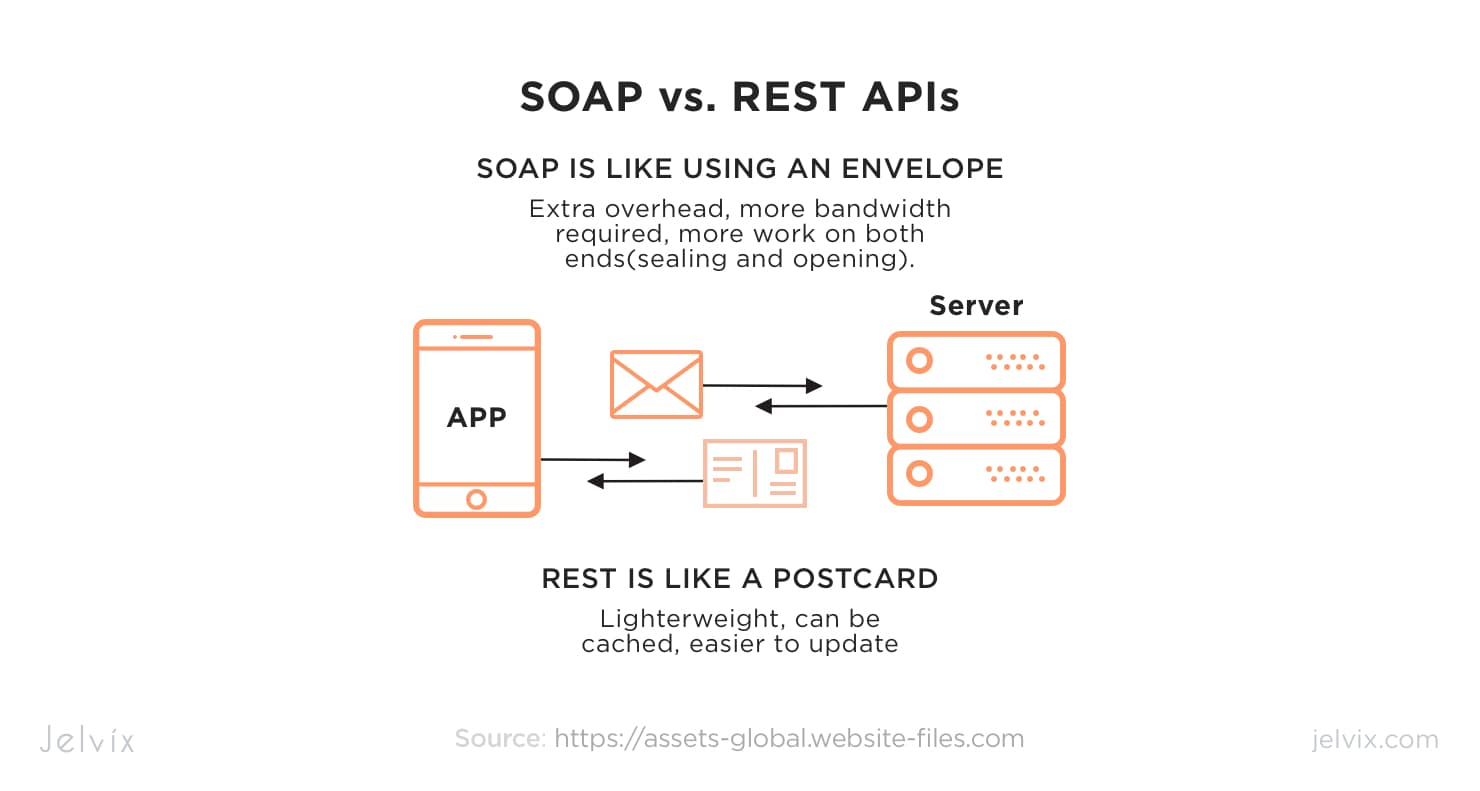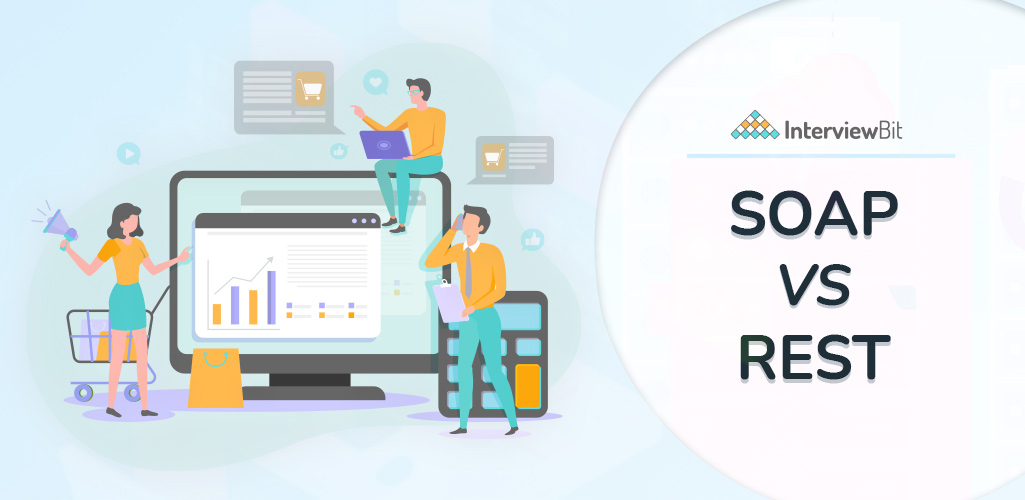Introduction: Understanding APIs and Their Role
APIs, or Application Programming Interfaces, serve as the backbone of modern software development by enabling communication between different software systems. They facilitate the sharing of data and functionality, allowing diverse applications to interact seamlessly. In this context, understanding the difference between SOAP API and REST API is essential for developers to make informed decisions when selecting the appropriate interface for their projects.
SOAP API: A Traditional Approach
SOAP (Simple Object Access Protocol) APIs are a traditional approach to implementing web services. SOAP APIs are XML-based and rely on a strict data format, which can be both a strength and a limitation. They use a Web Services Description Language (WSDL) for documentation, making it easier for developers to understand the API’s functionality and requirements. SOAP APIs typically operate over HTTP, SMTP, or TCP, allowing for flexibility in communication protocols.
REST API: A Modern and Flexible Alternative
REST (Representational State Transfer) APIs are a modern and flexible approach to implementing web services. REST APIs are lightweight and stateless, making them highly efficient for communication between different software systems. They focus on resources and use HTTP methods (GET, POST, PUT, DELETE) for performing various operations on these resources. REST APIs support standard media types such as JSON and XML for data exchange, allowing for flexibility in data format and ease of integration with different platforms.
Key Differences: SOAP vs. REST
SOAP and REST APIs have distinct characteristics that make them suitable for different scenarios. SOAP APIs, being XML-based, have a strict data format and use WSDL for documentation. They typically operate over HTTP, SMTP, or TCP, making them suitable for enterprise environments where complex data structures, reliable message delivery, and high security are essential. On the other hand, REST APIs are lightweight, stateless, and resource-oriented, using HTTP methods (GET, POST, PUT, DELETE) and standard media types (JSON, XML) for communication.
REST APIs are generally more suitable for web and mobile applications due to their simplicity, performance, and scalability. They are ideal when working with lightweight data formats and require high performance. However, SOAP APIs offer advanced features such as built-in error handling, extensive security, and transaction support, which can be beneficial in certain scenarios.
When to Choose SOAP over REST
Despite the growing popularity of REST APIs, SOAP APIs still have their place in modern software development. SOAP APIs might be a better choice in the following scenarios:
- Complex data structures: SOAP APIs are well-suited for handling complex data structures and large payloads due to their rigorous schema definition and support for various data formats.
- Reliable message delivery: SOAP APIs provide built-in error handling and message reliability features, ensuring that messages are delivered and processed correctly even in challenging network conditions.
- Highly secure environments: SOAP APIs offer advanced security features, such as WS-Security, which can be essential in highly regulated industries or environments that require stringent data protection.
When these requirements are paramount, SOAP APIs can provide a more robust and reliable solution compared to REST APIs.
When to Choose REST over SOAP
REST APIs are increasingly popular in modern software development, and there are several scenarios where they are more appropriate than SOAP APIs:
- Web and mobile applications: REST APIs are lightweight and stateless, making them an ideal choice for web and mobile applications that require high performance and scalability.
- Lightweight data formats: REST APIs typically use JSON or XML for data exchange, which are both lightweight and easy to work with, especially when dealing with large amounts of data.
- Simplified development process: REST APIs have a simpler and more straightforward development process compared to SOAP APIs, thanks to their support for various programming languages and frameworks.
When performance, ease of implementation, and lightweight data handling are critical factors, REST APIs can provide a more efficient and manageable solution compared to SOAP APIs.
How to Implement SOAP and REST APIs
Implementing SOAP and REST APIs can be achieved using various programming languages and frameworks. Here’s a brief overview of the process for both types of APIs:
Implementing SOAP APIs
SOAP APIs can be implemented using various languages, including Java, C#, and Python. For instance, Java developers can use the JAX-WS (Java API for XML Web Services) library, while C# developers can leverage the .NET Framework’s built-in support for SOAP services. These tools simplify the development process and help generate the necessary artifacts, such as WSDL files and SOAP messages.
Implementing REST APIs
REST APIs can be implemented using a wide range of programming languages and frameworks, such as Node.js (Express), Python (Flask, Django), Ruby (Ruby on Rails), and Java (Spring Boot, Jersey). These frameworks provide tools and libraries to create RESTful services, handle HTTP methods, and manage data serialization (JSON, XML).
When implementing either SOAP or REST APIs, consider using tools and libraries that simplify the development process, ensure compatibility with the chosen protocol, and adhere to industry best practices. This will help streamline the development process and ensure that the APIs meet the desired performance, security, and functionality requirements.
Conclusion: Selecting the Right API for Your Project
When deciding between SOAP and REST APIs, developers must consider the unique needs and constraints of their projects. Both SOAP and REST APIs have their strengths and weaknesses, and understanding these differences is crucial for making an informed decision.
SOAP APIs, with their rigorous schema definition and advanced security features, are often preferred in enterprise environments or when dealing with complex data structures and reliable message delivery. On the other hand, REST APIs shine in web and mobile applications, where lightweight data formats, high performance, and scalability are essential.
To choose the right API for your project, weigh the pros and cons of each approach. Consider the data format, message size, performance, security, and ease of implementation. By carefully evaluating these factors, developers can select the optimal API solution for their specific requirements, ensuring seamless communication between software systems and fostering successful collaboration.




